September 9th, 2025
The road into Waterton was already a journey into another world. Long before I reached the park gates, the mountains appeared suddenly, rising out of the prairie like a wall. Their abruptness always surprises me: flat golden grassland stretches for miles, and then, without transition, the peaks of

Sofa Mountain, Vimy Peak, Citadell Peaks, Mount Campbell, Mount Richards, Mount Grandell, Mount Galwey,
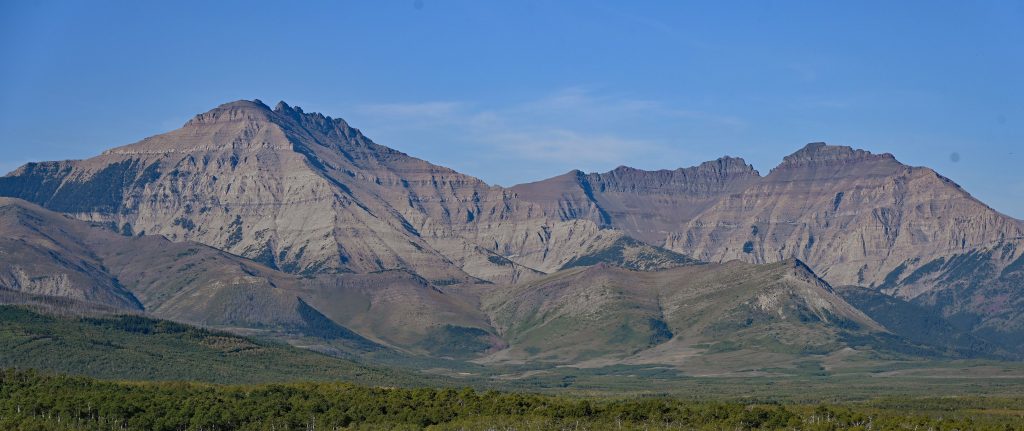
Mount Dungarvan (left), Cloudy Ridge (right) thrust up in bold colours and shapes.
I had to stop. The scene was too commanding to simply drive past. The flanks of the front range showed a painter’s palette of greys, rust-reds, and ochres, all layered and tilted, the ancient rock telling its story in sharp bands. Some ridges were knife-edged, silhouetted against the sky, while others spread wide and heavy, their slopes striped with scree.
Reaching the Prince of Wales Hotel, I stood on the bluff and looked out. Before me rose the Hotel, with Mount Grandell behind it.

Crandell is broad at its base and rises in confident slopes that steepen as they climb. Its surfaces are streaked with muted green-grey rock, broken by pale horizontal seams that gleam in the sun. Grandell, set farther back, appeared sterner, its bulk blocking the horizon, a fortress of layered limestone catching the early light.
I turned off onto Range Road 300A, known as the Road of Many Gorges Mountains. The name could not be more apt. Here the land is torn apart, the mountains split into ravines and canyons. Dark gashes cut deep into their flanks, while knife-edged ridges rise above, their profiles ragged against the sky. From this angle I glimpsed the far-off summits of the Lost–Anderson–Bauerman group, peaks that look like sculpted guardians. Their slopes show a mixture of reddish argillite and grey limestone, cut by a striking black band of harder rock. The view demanded another stop; I could not resist photographing this wild geometry.

A little later, I found myself at Red Rock Canyon, perhaps the most famous jewel of the park. The creek here flows through walls of brilliant red argillite, stone that glows fiery when wet or when the sun slants across it.
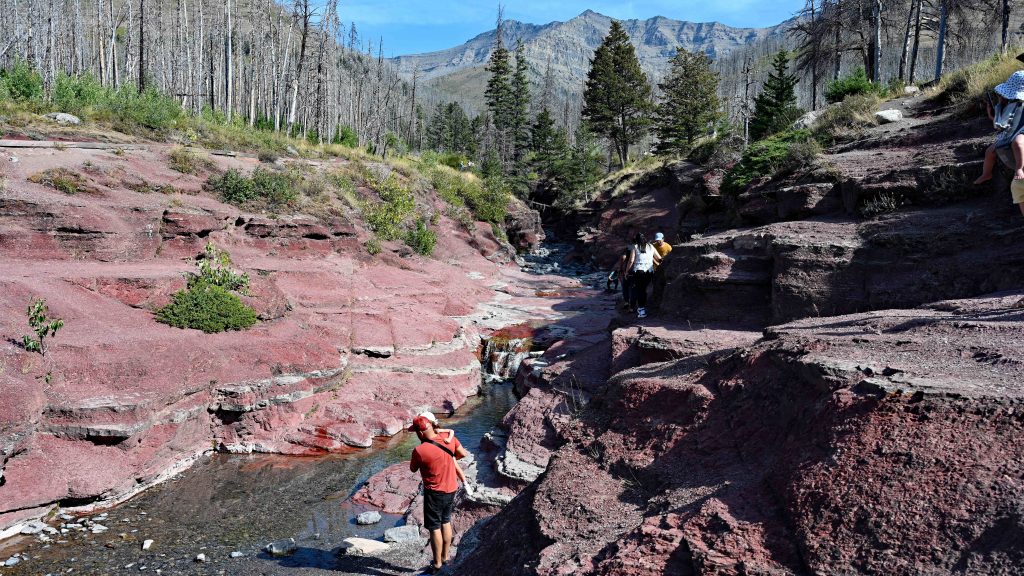
Rising above stood Cloudy Ridge (we have seen above on the right), a serrated skyline with gullies and ribs etched into its steep face. Clouds so often hover there that the name feels perfectly natural. I walked the short 0.8-kilometre loop, marvelling at how the red stone contrasted with the green forest and the clear water. Afterward I paused for lunch, sitting by the glowing canyon walls, the sound of rushing water filling the air.
Then I turned into the Blakiston Valley Trail. After a kilometre I reached Blakiston Falls, where the river leapt in silver torrents between the red rocks, its plunge echoing in the narrow gorge.

The water, foaming and tumbling, seemed almost alive as it carved its way through the ancient layers. I lingered, then pressed on. The valley opened wider, the trail leading me three kilometres deeper before I finally decided to turn back.
The scene along the valley was majestic. On my left loomed Mount Blakiston, the highest peak in Waterton, its massive form dominating the skyline.
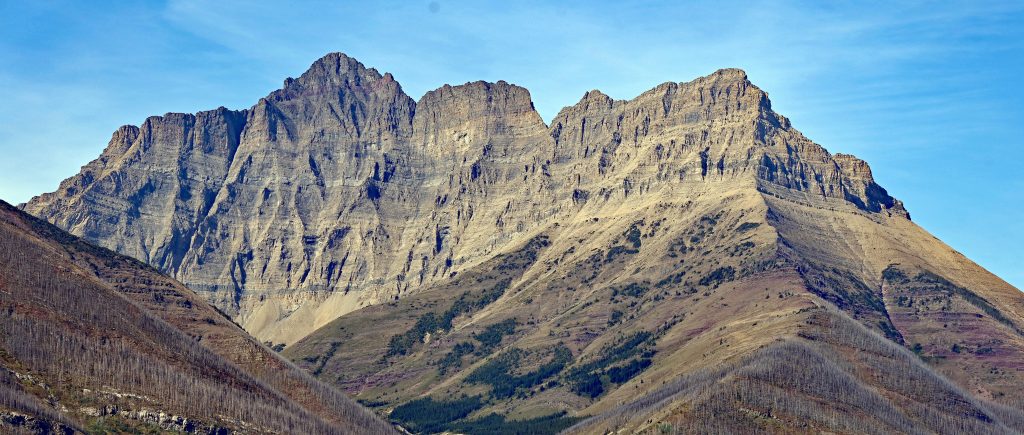
Its flanks are steep, streaked with grey scree, the strata like tilted lines running across the face. Beside it stood Mount Hawkins, slightly lower but no less striking. Hawkins is a mountain of colours: yellow and orange stone low on its slopes, deep red layers climbing higher, and finally dark grey at the summit.
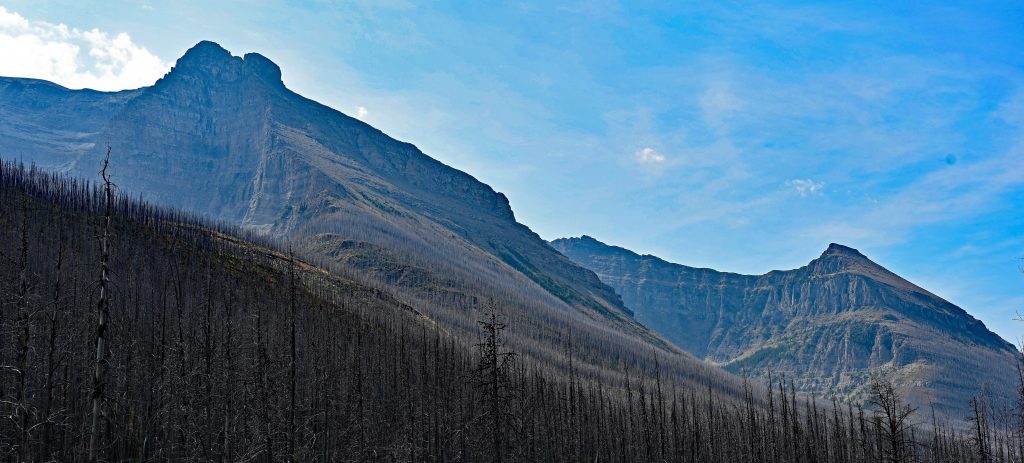
Across the valley, I saw Lost Mountain, less prominent, its form rounded and subdued, yet still part of the rugged story of this valley.
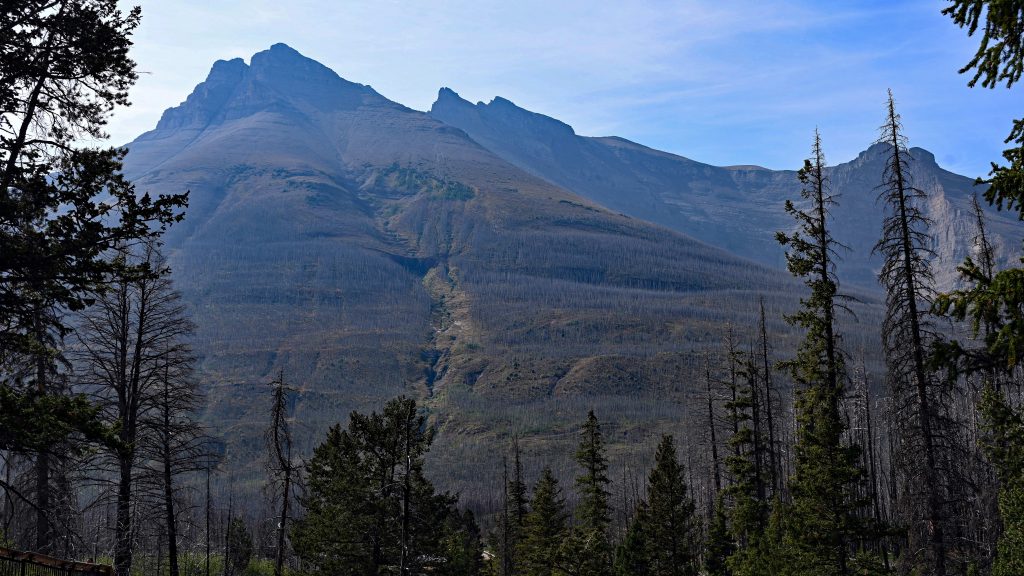
Next to it rose Anderson Peak, a sharp spire. What caught my eye most was the bold, horizontal black stripe across its face, the Purcell Sill, cutting through the lighter layers like a painted stroke. It gave Anderson a sense of drama, the contrast between light and dark impossible to ignore.

On the way back, Mount Dungarvan dominated my view. Its crest is jagged with pinnacles, rising like broken teeth against the sky. Near the summit another section of the Purcell Sill darkens the stone, while lower slopes glow with rusty reds and orange bands. Dungarvan has an almost sinister beauty, as though it had been carved with extra force by wind and fire.
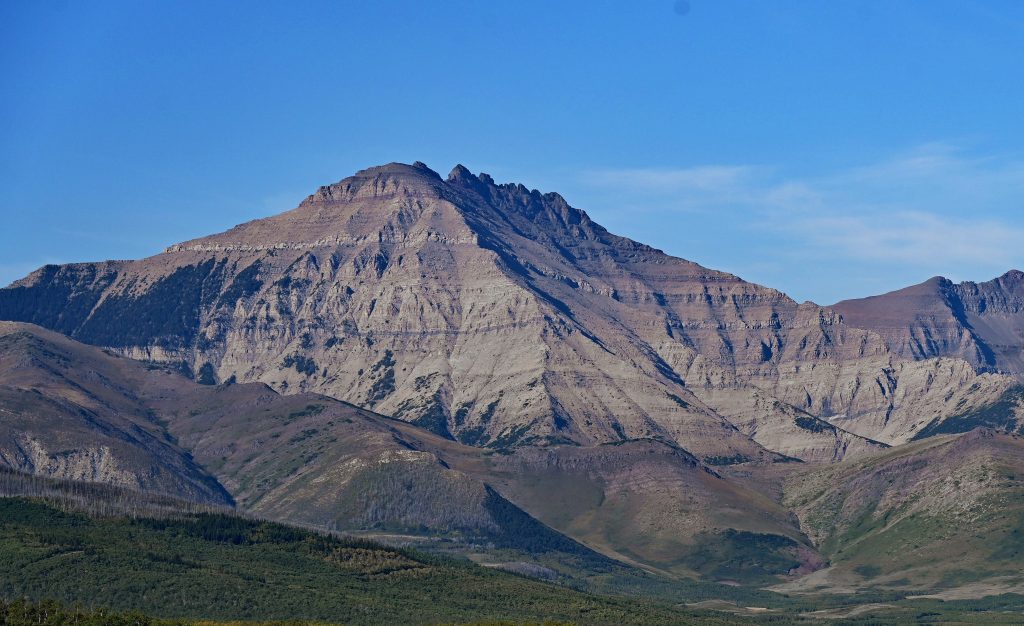
The valley itself told a more recent story. The fire of 2017 had swept through, leaving blackened trunks standing stark and skeletal. But life had already begun to return. Young aspens shimmered with green leaves, and pine saplings pushed up in bright clusters, though none yet taller than my shoulders. They seemed fragile against the burned forest, but also resilient, the promise of renewal in a landscape scarred and healing.
As I walked back down the trail, the late afternoon light touched the ridges, deepening their colours to bronze and crimson. The mountains seemed closer now, each one distinct: Blakiston tall and commanding, Hawkins glowing in layered hues, Anderson sharp and dark-striped, Lost Mountain quieter but steady, and Dungarvan jagged, defiant. Together they stood around me like ancient guardians of the valley, timeless and patient, their colours shifting with the fading sun.